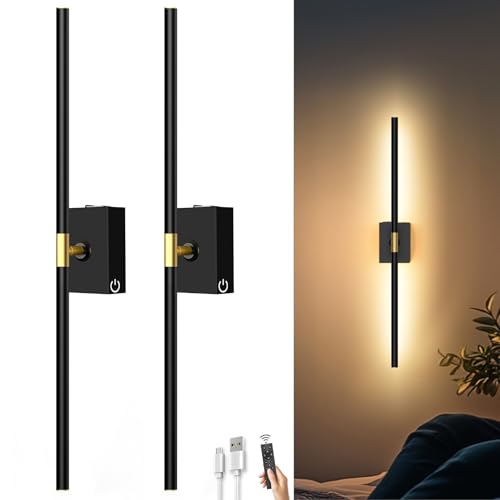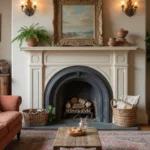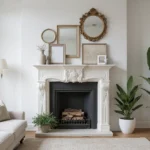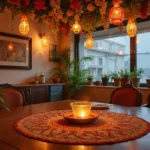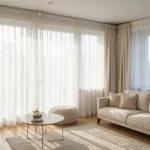When it comes to creating our dream home, the bathroom often gets overlooked. Yet this intimate space deserves just as much design attention as any other room. From sleek minimalist retreats to opulent spa-like sanctuaries, today’s popular bathroom styles offer something for every taste and budget.
We’ve gathered the most sought-after bathroom design trends that homeowners and designers love. Whether you’re planning a complete renovation or simply looking to refresh your space, understanding these popular styles will help you create a bathroom that’s both functional and stylish. Ready to transform your ordinary bathroom into an extraordinary oasis? Let’s explore the bathroom designs that are making waves in today’s homes.
10 Most Popular Bathroom Styles Trending This Year
1. Modern Minimalist
Modern minimalist bathrooms feature clean lines, simple color palettes, and clutter-free spaces that create a sense of calm. These bathrooms typically incorporate materials like glass, ceramic, and polished metals with a focus on geometric shapes and functional elements. Wall-mounted vanities and toilets help maintain the streamlined appearance while maximizing floor space. Neutral colors such as white, gray, and black dominate this style, occasionally accented with a single bold color for visual interest.
2. Industrial Chic
Industrial chic bathrooms combine raw elements with sophisticated design features for an edgy yet refined aesthetic. Exposed pipes, concrete floors, and brick walls serve as characteristic features of this increasingly popular style. Metal fixtures in matte black or brushed nickel complement the industrial vibe while adding a touch of elegance. Edison bulbs, factory-style lighting fixtures, and repurposed furniture pieces further enhance the authentic industrial atmosphere in these distinctive spaces.
3. Scandinavian Inspired
Scandinavian inspired bathrooms emphasize natural light, functionality, and simple elegance with their light color schemes and organic materials. Light woods like oak and pine appear in vanities, shelving, and accessories, creating warmth against predominantly white backgrounds. Natural textiles such as cotton and linen add texture through towels and shower curtains. Plants and botanical elements bring life to these serene spaces, perfectly embodying the Scandinavian principle of “hygge” (coziness and comfort).
4. Traditional Elegance
Traditional elegance bathrooms showcase timeless design elements including ornate details, classic fixtures, and rich materials that never go out of style. Clawfoot tubs often serve as stunning focal points, complemented by pedestal sinks and detailed woodwork. Warm color schemes featuring creams, beiges, and soft blues create an inviting atmosphere. Crown molding, wainscoting, and framed mirrors add architectural interest that elevates these bathrooms to luxurious retreats.
5. Contemporary Spa
Contemporary spa bathrooms transform everyday spaces into luxurious retreats with features designed for relaxation and rejuvenation. Rainfall showerheads, deep soaking tubs, and steam systems provide spa-like experiences in the comfort of home. Natural stones such as marble and travertine appear in countertops, shower surrounds, and flooring. Ambient lighting, including recessed fixtures and backlit mirrors, creates a soothing atmosphere essential for unwinding after long days.
6. Coastal Retreat
Coastal retreat bathrooms bring beachside serenity into homes with light, airy designs and ocean-inspired elements. Soft blues, seafoam greens, and sandy neutrals dominate the color palette, evoking shoreline landscapes. Weathered woods, reminiscent of driftwood, add character to vanities and accessories. Decorative elements like seashells, coral, and nautical accessories complete the coastal vibe without becoming overly themed or kitschy.
7. Mid-Century Modern
Mid-century modern bathrooms celebrate retro aesthetics with their clean lines, organic shapes, and bold accents that pay homage to design trends from the 1950s and 60s. Geometric patterns appear in floor tiles and backsplashes, creating visual interest without overwhelming the space. Warm wood tones in walnut or teak complement the vintage atmosphere. Funky light fixtures, framed sunburst mirrors, and pops of mustard yellow or avocado green authentically capture this nostalgic yet timeless style.
8. Rustic Farmhouse
Rustic farmhouse bathrooms combine country charm with practical features using distressed wood, vintage fixtures, and homey accents. Barn doors, shiplap walls, and reclaimed wood vanities bring authentic farmhouse character to these spaces. Vessel sinks made of copper or stone sit atop wooden vanities, creating striking focal points. Mason jars, galvanized metal containers, and woven baskets serve as functional storage while improving the rustic aesthetic.
9. Japanese Zen
Japanese Zen bathrooms emphasize simplicity, natural elements, and balance, creating tranquil spaces perfect for relaxation. Soaking tubs, often made of hinoki wood or deep porcelain, invite long, meditative baths. Minimalist storage answers keep essentials organized while maintaining visual calm. Bamboo accents, smooth pebbles, and small indoor gardens introduce natural elements that foster connection with nature, a key principle in Japanese design philosophy.
10. Eclectic Bohemian
Eclectic bohemian bathrooms celebrate personal expression through vibrant colors, mixed patterns, and global influences that create uniquely personalized spaces. Moroccan tiles with intricate patterns transform floors and shower surrounds into artistic statements. Richly colored textiles add layers of texture through shower curtains, window treatments, and floor coverings. Plants of various sizes thrive in these expressive environments, adding verdant life to the colorful, collected aesthetic that defines bohemian style.
Minimalist Modern: Clean Lines and Simple Elegance

Minimalist modern bathrooms prioritize unobstructed sightlines, geometric shapes, and functional layouts that create a sense of calm and order. This style emphasizes straight-edged vanities, frameless mirrors, and concealed storage to maintain visual simplicity throughout the space.
Essential Elements of Minimalist Bathrooms
- Floating Fixtures: Wall-mounted vanities and toilets create an illusion of more floor space while reducing visual clutter. These floating elements are signature features that instantly communicate minimalist design principles.
- Streamlined Storage: Built-in cabinets, recessed shelving, and mirrored medicine cabinets keep toiletries and bathroom essentials hidden from view. Smart storage answers maintain the clean aesthetic that defines this style.
- Geometric Simplicity: Straight lines and simple shapes dominate minimalist bathrooms, from rectangular sinks to square shower enclosures. These geometric forms create a sense of order and precision.
- Frameless Glass: Shower enclosures without visible frames enhance the open feel while maintaining functional separation. Glass partitions allow light to flow uninterrupted throughout the space.
- Statement Fixtures: Sleek faucets, rainfall showerheads, and freestanding tubs serve as functional focal points. These fixtures combine practicality with polished finishes that elevate the entire bathroom.
Color Schemes for Modern Minimalist Spaces
- Monochromatic Palettes: White, gray, and beige dominate minimalist bathrooms, creating serene foundations that feel clean and timeless. These neutral tones allow architectural elements and fixtures to take center stage.
- Strategic Contrast: Black fixtures or dark accents against white backgrounds create dramatic focal points without overwhelming the space. This controlled contrast adds visual interest while maintaining simplicity.
- Natural Warmth: Wood accents in vanities or accessories introduce organic texture and warmth to otherwise cool minimalist spaces. These natural elements prevent the bathroom from feeling sterile or impersonal.
- Material Consistency: Polished concrete, glass enclosures, and floor-to-ceiling tiling in consistent colors ensure visual cohesion throughout the space. Using the same material for different surfaces creates a seamless appearance.
- Light Amplification: Reflective surfaces including mirrors and glass maximize natural light, improving the airy feel that’s essential to minimalist design. These elements make even small bathrooms feel more spacious and open.
Traditional Charm: Classic Details and Timeless Appeal
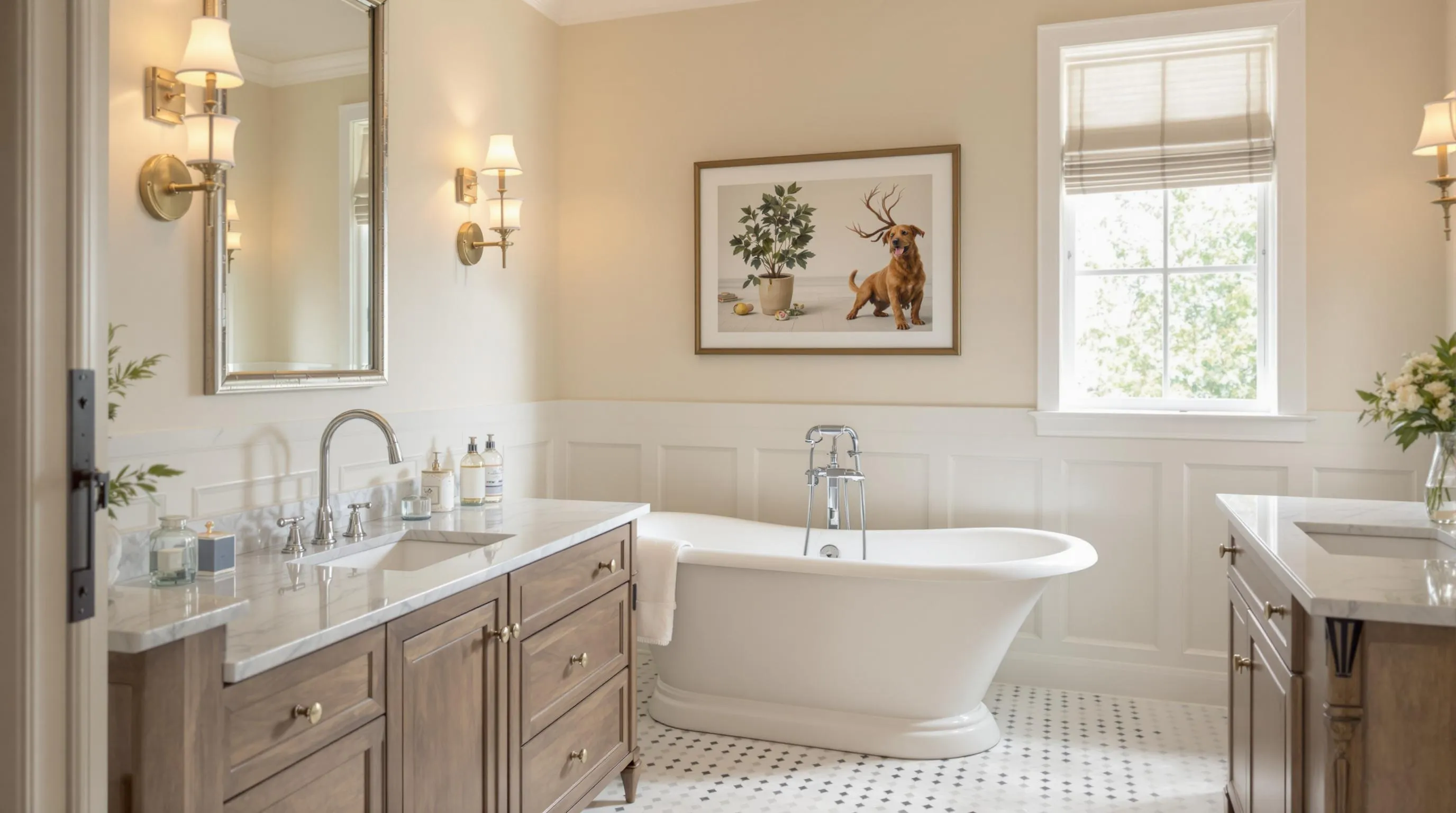
Traditional bathroom designs never go out of style, emphasizing symmetry and elegant details that create spaces with enduring appeal. These classic bathrooms blend timeless elements with refined aesthetics for a look that feels both sophisticated and comforting.
Signature Features of Traditional Bathrooms
Traditional bathrooms showcase several distinctive elements that define their classic charm. Ornate details like wainscoting, crown molding, and elegantly framed mirrors establish the room’s traditional character while adding architectural interest. Freestanding tubs, particularly clawfoot or pedestal styles, serve as striking focal points that instantly communicate traditional design sensibilities. Warm lighting fixtures such as wall sconces or small chandeliers with antique finishes enhance the inviting atmosphere, casting a flattering glow throughout the space. Neutral color palettes dominate these bathrooms, with cream, beige, and soft earth tones creating a serene backdrop that allows the detailed elements to shine. Natural materials including marble countertops and wood cabinetry further reinforce the traditional aesthetic while providing texture and visual weight to the design.
How to Modernize a Traditional Bathroom Design
Updating a traditional bathroom doesn’t mean abandoning its classic appeal. Mixing materials offers a contemporary twist—try pairing classic marble with matte black fixtures or metallic accents for striking contrast that feels current yet respectful of traditional roots. Streamlined updates can breathe new life into traditional spaces—replace bulky vanities with floating versions, swap ornate mirrors for frameless alternatives, or integrate smart technology like LED-lit mirrors and touchless faucets for modern convenience. Eco-conscious elements align traditional bathrooms with contemporary values—incorporate reclaimed wood, low-flow fixtures, or recycled stone countertops to create a more sustainable space. Color infusion presents another modernization opportunity—introduce muted blues or soft greens while maintaining a neutral base for a fresh take on traditional design that maintains balance and harmony. Transitional vanities offer the perfect compromise between old and new—Shaker-style cabinetry paired with modern hardware creates a bridge between traditional foundations and contemporary sensibilities.
Industrial Chic: Raw Materials and Urban Edge

Industrial chic bathrooms embrace the raw, unfinished aesthetic once found exclusively in urban warehouses and lofts. This bold style has surged in popularity as homeowners seek distinctive, character-rich spaces that break from conventional bathroom designs.
Key Components of Industrial Bathroom Design
Raw materials form the foundation of any industrial chic bathroom. Concrete surfaces offer a rugged appeal when used for countertops, sinks, or accent walls, creating an unmistakably urban feel. Exposed brick walls add warmth and texture, balancing the coolness of metal fixtures and accessories that typically feature throughout these spaces. Steel elements, whether in the form of statement sinks or storage answers, bring authentic industrial character to the room.
Exposed plumbing and pipes serve as design features rather than elements to conceal. These functional components become decorative statements that celebrate the mechanical beauty of industrial spaces. Ductwork and structural elements remain visible, honoring the architectural honesty that defines this style.
Glass and steel combine to create striking features like walk-in showers with minimal framing, improving the urban warehouse aesthetic. Large mirrors with metal framing not only serve a practical purpose but also expand the sense of space while reinforcing the industrial theme.
Balancing Industrial Elements with Comfort
Industrial designs can sometimes feel stark or cold without thoughtful balancing elements. Comfortable fixtures like deep soaking tubs or well-padded seating areas create welcome contrast against harder industrial components. Hybrid styling approaches work exceptionally well—combining industrial features with rustic touches like reclaimed wood or farmhouse-style beams adds warmth without compromising the urban edge.
Textiles play a crucial role in softening industrial bathrooms. Plush towels, bath mats, and fabric shower curtains introduce tactile comfort and can be easily changed to refresh the space. Strategic lighting choices further enhance comfort—pendant lights with metal shades maintain the industrial look while providing warm, directed illumination that creates a more inviting atmosphere.
Farmhouse Fresh: Rustic Warmth and Practical Beauty

Farmhouse bathrooms blend rustic charm with modern simplicity, creating spaces that feel both cozy and contemporary. This increasingly popular style combines the warmth of natural materials with practical design elements that offer functional beauty for everyday living.
Must-Have Features in Farmhouse Bathrooms
- Freestanding Bathtubs make a stunning statement in farmhouse bathrooms, with clawfoot or vintage-style tubs serving as eye-catching focal points. These classic fixtures instantly evoke nostalgia while providing a luxurious bathing experience.
- Reclaimed Wood adds authentic character and warmth to any farmhouse bathroom design. Using salvaged timber for vanities, open shelving, or accent walls brings textural interest and environmental sustainability to your space.
- Black Accents provide striking contrast against the typically neutral farmhouse palette. Wall sconces, towel holders, and plumbing fixtures in matte black finishes balance the softness of natural materials with modern sophistication.
- Oversized Vanities offer both practical storage and aesthetic appeal in farmhouse bathrooms. Double sink designs particularly complement larger spaces, providing ample countertop area while anchoring the room with substantial presence.
- Natural Materials form the foundation of farmhouse style, with stone, wood, and organic textiles creating a connection to the outdoors. These elements introduce varying textures that add depth and visual interest throughout the space.
- Neutral Color Palette featuring whites, browns, and earthy tones creates the perfect backdrop for farmhouse design. These calming hues allow architectural details and textural elements to take center stage.
Modern Farmhouse Bathroom Adaptations
- Blending Styles has become the signature of modern farmhouse bathrooms, where traditional rustic elements meet sleek contemporary fixtures. This fusion creates spaces that feel timeless yet fresh, with shiplap walls or beadboard paired alongside streamlined vanities.
- Texture and Color play crucial roles in updated farmhouse designs, with neutral backdrops providing the perfect canvas for layering. Woven fabrics, natural wood tones, and subtle patterns add dimension without overwhelming the space.
- Functional Design remains essential in modern interpretations, with thoughtful integration of contemporary lighting and efficient plumbing. Even smaller bathrooms can embrace farmhouse charm through careful selection of scaled-down elements that maintain the cozy atmosphere farmhouse style is known for.
- Vintage-Style Fixtures with modern functionality offer the best of both worlds. Today’s farmhouse-inspired sinks, faucets, and hardware provide reliability and water efficiency while maintaining the authentic aesthetic that defines this beloved style.
Scandinavian Simplicity: Light and Functional Design

Scandinavian bathroom design embodies minimalism, clean lines, and purposeful functionality. This popular style creates serene, inviting spaces through its emphasis on simplicity and natural connections, offering a perfect balance of beauty and practicality.
Hallmarks of Scandinavian Bathroom Style
Functionality takes center stage in Scandinavian bathrooms, where every element serves a purpose without unnecessary ornamentation. Natural light flows abundantly through large windows and strategically placed skylights, creating bright, airy spaces that feel instantly welcoming. The color palette remains deliberately neutral, featuring whites, light grays, and soft beiges that enhance spaciousness and promote tranquility. Clean lines dominate the aesthetic, with streamlined fixtures and uncluttered surfaces contributing to the minimalist appeal. Connection to nature stands as a fundamental principle, achieved through material choices and design elements that bring the outdoors in. Utility drives design decisions, ensuring that while beautiful, these bathrooms remain highly practical for everyday use.
Materials That Define Scandinavian Bathrooms
Light wood accents form the backbone of Scandinavian bathroom design, with birch, ash, and pine adding essential warmth and texture to otherwise simple spaces. Natural stone elements, particularly marble, create subtle visual interest while maintaining the connection to nature that defines this style. Tile work typically features clean lines and minimal patterns, contributing to the overall sense of calm and order. Glass appears prominently in shower enclosures and mirrors, maximizing light reflection and improving the perception of space. Matte finishes often prevail over glossy ones, creating a soft, understated elegance that feels authentically Scandinavian. Metal fixtures in brushed nickel or matte black provide functional focal points without overwhelming the restrained design scheme. Together, these materials create harmonious, balanced spaces that exemplify the beauty of Scandinavian simplicity.
Coastal Retreat: Beach-Inspired Serenity

Coastal bathrooms transform ordinary spaces into tranquil seaside sanctuaries by prioritizing natural light, airy layouts, and organic textures. This design style captures the essence of beachfront living through carefully selected colors, materials, and accessories that evoke the calming presence of the ocean.
Color Palettes for Coastal Bathroom Designs
Successful coastal bathrooms start with foundational hues like white, cream, or pale gray for walls and cabinetry, creating a bright, open atmosphere. Seafoam green, washed-out blue, and muted aqua serve as perfect accent tones for towels, tiles, or cabinetry details, directly referencing the colors of the sea. Natural contrasts come through sandy beige or light taupe elements, often incorporated via wood-look porcelain tiles or jute rugs. Large windows or skylights enhance these palettes by allowing abundant natural light to flood the space, creating an authentic connection to outdoor environments. Current trends emphasize nature-inspired elements like marble and terrazzo, which can be seamlessly integrated into coastal designs while maintaining their serene aesthetic.
Accessories That Enhance the Coastal Vibe
Textural elements play a crucial role in coastal bathroom design, with woven baskets, linen shower curtains, and bamboo-framed mirrors adding organic warmth to the space. Maritime accents such as glass jars filled with seashells, coral-inspired soap dispensers, or wave-patterned drawer pulls reinforce the beach theme without appearing kitschy. Lighting fixtures like wrought-iron or rope-wrapped pendant lights introduce rustic charm while maintaining the coastal aesthetic. Driftwood vanities and pebble-tile floors serve as statement features that ground the design in natural materials. Wellness elements align perfectly with 2025 design trends – consider incorporating diffusers with ocean-inspired scents like saltwater breeze and sound systems for wave-like white noise to create a multisensory coastal retreat experience.
Mid-Century Modern: Retro Flair with Contemporary Function

Mid-century modern bathrooms blend nostalgic 1950s-60s design with practical functionality, creating spaces that feel both timeless and fresh.
Characteristic Elements of Mid-Century Bathrooms
Mid-century modern bathrooms showcase distinctive retro colors like pastel pinks, mint greens, or bold turquoise that instantly transport you to another era. Clean, organic lines define the furniture and fixtures, emphasizing geometric shapes without unnecessary ornamentation. Natural materials play a central role in this style, with teak, walnut, or oak vanities bringing warmth and authenticity to the space. Functionality remains paramount in mid-century design, focusing on usable spaces with minimal clutter and maximum efficiency. Statement lighting fixtures such as Sputnik chandeliers or globe pendants serve as artistic focal points while providing essential illumination. These elements combine to create bathrooms that feel both nostalgic and surprisingly relevant in today’s design industry.
Incorporating Mid-Century Details in Modern Spaces
Blending vintage and modern elements creates the most successful mid-century bathrooms, pairing retro-inspired fixtures with contemporary surfaces like quartz or marble for an updated look. Textured tiles or geometric wallpapers add visual interest while maintaining the distinctive mid-century aesthetic, creating depth without overwhelming the space. Functional decor pieces serve dual purposes in these bathrooms, such as vintage-inspired storage units that provide organization while contributing to the overall design story. Wood elements can warm up the typically cool bathroom environment, with vanities or shelving in rich walnut or teak tones creating balance against ceramic and tile surfaces. Authentic or reproduction lighting from this era instantly establishes mid-century credentials, with brass sconces or pendant lights becoming statement pieces that anchor the entire design.
Luxury Spa: High-End Relaxation and Wellness

Luxury spa bathrooms transform ordinary spaces into serene retreats focused on rejuvenation and wellness. These sophisticated sanctuaries prioritize creating a calming environment through thoughtful design elements that engage all senses.
Essential Features for Creating a Spa-Like Bathroom
Creating a truly spa-like bathroom requires attention to exact details that elevate the everyday experience. Elegant layouts serve as the foundation, featuring spacious walk-in showers with rainfall showerheads and freestanding bathtubs that become stunning focal points. Specialized toilet seats add unexpected comfort while heated floors provide luxurious warmth underfoot. Lighting plays a crucial role in establishing the right atmosphere, with soft, dimmable options that adjust to create the perfect relaxing environment. Natural elements like stone and wood surfaces introduce organic textures that calm the mind and connect the space to nature. Accessories complete the spa experience – plush towels, scented candles, and premium bath products transform routine bathing into indulgent self-care rituals. Ambient lighting thoughtfully placed throughout the room enhances the overall sense of tranquility and relaxation.
Luxury Materials and Finishes Worth Investing In
High-end materials form the cornerstone of any luxury spa bathroom, creating both visual impact and lasting quality. Marble, granite, and natural stone surfaces instantly communicate sophistication while providing unique patterns that can’t be replicated. Quality fixtures deserve important investment, particularly rainfall showerheads and sleek faucets that combine beautiful design with superior functionality. Premium metals like brushed gold or matte black hardware create elegant contrast against natural stone. Handcrafted tiles installed in distinctive patterns offer opportunities for personalization while maintaining an upscale aesthetic. Glass enclosures with minimal hardware maximize visual space and allow natural light to flow throughout the room. We’ve found that these materials not only create immediate visual impact but also maintain their beauty for years, making them worth the initial investment.
Transitional Balance: The Best of Traditional and Contemporary

Transitional bathrooms masterfully blend traditional elegance with contemporary minimalism, creating spaces that feel both timeless and fresh. This harmonious style offers the perfect middle ground for homeowners who appreciate classic elements but desire modern functionality.
Defining Features of Transitional Bathroom Design
Transitional bathrooms embrace neutral color palettes as their foundation, primarily featuring whites, beiges, grays, and taupes that create a calming atmosphere. Material contrasts play a crucial role in this design style, combining wood, glass, stone, and metal to achieve rich textural interest throughout the space. Clean lines dominate transitional bathrooms, with minimal ornamentation and functional layouts that prioritize simplicity without sacrificing sophistication. Hybrid fixtures serve as signature elements in these spaces, where you’ll find traditional pieces like clawfoot tubs or pedestal sinks paired with contemporary features such as frameless showers or sleek vanities. The overall design emphasizes balance between different eras, creating bathrooms that won’t quickly feel dated as trends evolve.
Popular Color Schemes for Transitional Bathrooms
Warm neutrals form the backbone of many transitional bathroom color schemes, with beige or taupe walls complemented by crisp white trim to create subtle yet effective contrast. Cool tones offer another popular approach, using gray or off-white as primary colors enhanced by natural stone accents that add texture and visual interest. Metallic accents provide essential finishing touches in transitional spaces, with brushed nickel, matte black, or chrome fixtures effortlessly complementing the neutral base palette. The subdued color approach in transitional design allows materials to take center stage, creating visual harmony while maintaining interest through texture rather than bold color statements. This balanced approach to color ensures transitional bathrooms maintain their appeal for years, transcending short-lived trends while still feeling current and fresh.
Eco-Friendly Focus: Sustainable Style with Purpose

We’re seeing a important shift toward environmentally conscious bathroom designs that don’t compromise on aesthetics. Today’s eco-friendly bathrooms combine sustainability with sophisticated style, creating spaces that are both beautiful and responsible.
Sustainable Materials for Eco-Conscious Bathrooms
Recycled materials have become staples in modern eco-friendly bathroom design, offering unique character while reducing environmental impact. Natural stone sourced from responsible quarries provides timeless elegance and durability without depleting new resources. Terrazzo, composed of recycled glass and stone fragments set in concrete, delivers visual interest while making use of materials that would otherwise go to waste. Low-VOC paints eliminate harmful chemicals that traditional paints release into your home, protecting both indoor air quality and the environment. Reclaimed wood brings warmth and history to bathroom vanities and shelving, giving new life to existing materials while preventing deforestation. Many homeowners are now embracing these sustainable options as they create bathrooms that reflect both personal style and environmental values.
Water-Saving Fixtures That Don’t Sacrifice Style
Low-flow showerheads have revolutionized water conservation in bathrooms, reducing consumption significantly while maintaining satisfying water pressure. Dual-flush toilets offer users the choice between partial and full flushes, cutting water usage by up to 50% compared to traditional models. Touchless faucets incorporate sophisticated sensor technology that optimizes water flow and minimizes waste, automatically shutting off when not in use. Smart shower systems allow precise temperature and flow control through digital interfaces, helping users track and manage their water consumption without compromising the shower experience. Water-efficient bathroom fixtures now come in a wide range of stylish designs and finishes, proving that conservation and luxury can coexist beautifully. Manufacturers have responded to increased demand by creating water-saving products that enhance rather than detract from bathroom aesthetics, making it easier than ever to design an eco-friendly bathroom that feels indulgent rather than restrictive.
How to Choose the Right Bathroom Style for Your Home
Your bathroom should reflect your personal taste while meeting your functional needs. Whether you’re drawn to the clean lines of Modern Minimalist or the cozy warmth of Rustic Farmhouse there’s a perfect style for your space.
Consider your home’s existing architecture when selecting a bathroom style. A cohesive design creates flow throughout your living spaces. Also think about longevity – will you still love that bold pattern in five years?
We encourage you to mix elements from different styles to create a unique bathroom that feels authentically yours. Remember that functionality should never be sacrificed for aesthetics – the best bathroom designs seamlessly blend both.
With the right style choices your bathroom can become more than just a functional space – it’ll be a personal sanctuary you’ll enjoy for years to come.
Frequently Asked Questions
What makes a bathroom minimalist?
A minimalist bathroom features clean lines, neutral colors, and clutter-free spaces. Key elements include floating fixtures, streamlined storage solutions, geometric shapes, frameless glass enclosures, and statement fixtures that serve as focal points. The color scheme typically employs monochromatic palettes with strategic contrasts, often incorporating natural wood accents for warmth while maintaining material consistency throughout the space.
How can I create a spa-like bathroom?
Create a spa-like bathroom by installing a spacious walk-in shower, freestanding bathtub, and heated floors. Use high-end materials like marble or natural stone for surfaces. Incorporate ambient lighting with dimmers for a calming atmosphere. Add wellness features such as aromatherapy diffusers or a built-in sound system. Complete the look with plush towels, natural accessories, and minimal clutter to enhance the sense of tranquility.
What defines industrial chic bathroom style?
Industrial chic bathrooms embrace raw materials and urban edge through concrete surfaces, exposed brick, and metal elements. The style celebrates rather than conceals structural elements like exposed plumbing and ductwork. Glass and steel shower enclosures create striking focal points. To balance the inherent starkness, incorporate comfortable fixtures, soft textiles, and strategic lighting that creates warmth within the industrial framework.
What are the key features of farmhouse bathrooms?
Farmhouse bathrooms blend rustic charm with modern simplicity through freestanding tubs, reclaimed wood accents, and black fixtures that contrast against neutral palettes. Oversized vanities offer both functionality and rustic appeal. Modern farmhouse adaptations incorporate traditional elements with contemporary design, emphasizing texture through shiplap or beadboard. Vintage-style fixtures with modern functionality maintain authentic aesthetics while meeting today’s practical needs.
How do I incorporate Scandinavian style in my bathroom?
Create a Scandinavian bathroom by maximizing natural light and using a neutral color palette dominated by whites and light woods. Install streamlined fixtures that enhance spaciousness. Choose natural materials like light wood, stone, and matte finishes. Select metal fixtures in simple designs as functional focal points. Prioritize utility alongside aesthetics with practical storage solutions. The result should feel serene, inviting, and purposefully simple.
What colors work best for coastal bathroom designs?
Coastal bathrooms thrive with a foundation of whites and pale grays, complemented by ocean-inspired accent colors like seafoam green, muted aqua, and sandy beige. These hues create a light, airy feel reminiscent of beachside retreats. For depth, incorporate navy blue accents. The palette should remain soft and natural, avoiding overly bright or synthetic-looking colors that would disrupt the serene, organic essence of coastal design.
How can I create an eco-friendly bathroom?
Create an eco-friendly bathroom by using recycled materials like reclaimed wood and natural stone. Choose low-VOC paints to improve indoor air quality. Install water-saving fixtures such as low-flow showerheads, dual-flush toilets, and touchless faucets to reduce consumption without sacrificing performance. Add LED lighting for energy efficiency. Select sustainable materials like bamboo or cork for surfaces and accessories to minimize environmental impact while maintaining style.
What defines mid-century modern bathroom style?
Mid-century modern bathrooms feature retro colors, clean organic lines, and natural materials like teak and walnut. The design prioritizes usability with minimal clutter and often includes statement lighting fixtures as artistic focal points. To create this style, blend vintage and contemporary elements while maintaining visual simplicity. Characteristic color combinations include warm wood tones paired with bold accents in mustard yellow, teal, or burnt orange.
What is transitional bathroom style?
Transitional bathroom style masterfully blends traditional elegance with contemporary minimalism. It features neutral color palettes, material contrasts (like wood against marble), clean architectural lines, and hybrid fixtures that combine classic and modern elements. Popular schemes emphasize either warm neutrals (beige, taupe) or cool tones (gray, white) with metallic accents as finishing touches. This balanced approach creates timeless spaces that feel both classic and fresh.
How can I make a small bathroom feel luxurious?
Make a small bathroom feel luxurious by installing high-quality fixtures and materials like marble or quartz countertops. Use large mirrors to create the illusion of space. Incorporate ambient lighting with sconces or LED strips for a sophisticated atmosphere. Choose a monochromatic color scheme with metallic accents. Add plush towels and elegant accessories. Consider a frameless glass shower door rather than a curtain to enhance visual space while adding a high-end touch.












